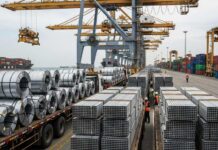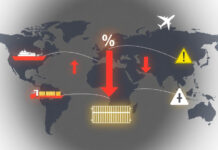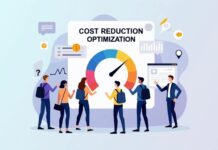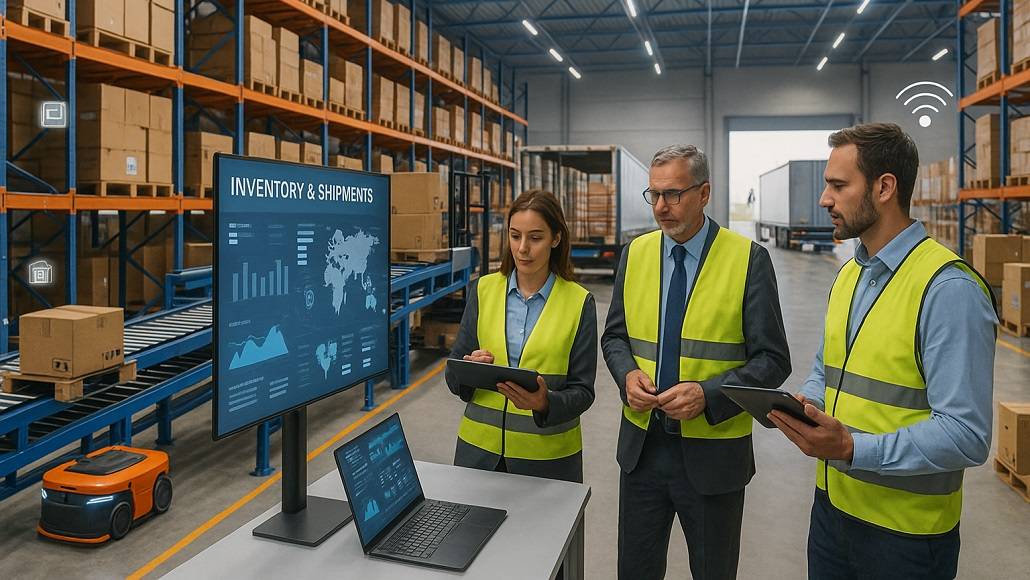In an era where supply chain logistics is the key to the success of almost every modern business, maturing logistics operations has become critical to staying competitive and meeting customer expectations. As global trade becomes more complicated, uncertain disruptions become more frequent, and consumer tastes shift, companies must reimagine how they do logistics. An evolved supply chain is no longer merely the backbone of a company; it is an actively smart system that generates efficiency, creates innovation, and puts companies in place for long-term triumph.
Matured supply chain logistics operations are not only about technology or process; it is a comprehensive change that brings in efficiency, visibility, resilience, orchestration, and appropriate capabilities. Through these strategies, companies can not only simplify their processes but also bring value to all stakeholders involved.
Driving Efficiency: From Manual Tasks to Intelligent Automation
Efficiency is the hallmark of every experienced logistics operation. The age of depending on manual work and obsolete methods is over. Logistics today requires the implementation of smart automation technologies that eliminate redundant processes, minimize human error, and drive the speed of operations.
Automation is a broad set of innovations, ranging from robotic warehouses to software systems that track inventory and handle order fulfillment. They enable companies to process more tasks with greater precision and accuracy. For example, predictive systems based on artificial intelligence have the ability to predict the patterns of demand to ensure that inventory levels match the needs of the market. This eliminates wastage, maximizes storage space, and guarantees customer availability of products.
In addition, automation also encompasses transportation and delivery. Autonomous vehicles, route optimization software, and advanced shipment tracking systems guarantee goods are transported smoothly through the supply chain. What this delivers is not only increased speed but also much lower operating expenses.
The transition from human to automated processes compels companies to rethink their operations and spend money on staff training. This collaboration between humans and technology guarantees that the labor force is able to manage and utilize automation so that there is a smooth combination of innovation and human know-how.
Enhancing Visibility to Turn Data into Actionable Insights
Visibility throughout the supply chain is a crucial component in the development of logistics operations. Without visibility into the whole supply network, companies are open to inefficiencies, delay, and surprise disruptions. The technology of big data and analytics has made it possible to leverage unprecedented levels of raw data into tangible, actionable insight.
Matured supply chain logistics visibility begins with an integrated technology platform that tracks and monitors products during each step of the supply chain. The systems need to obtain data from many touchpoints, from procurement to manufacturing to transportation and distribution. In real-time, it allows companies to identify bottlenecks, optimize resource allocation, and improve decision-making.
Analytics software can further improve transparency by examining past patterns and anticipating impending difficulties. For instance, companies can utilize predictive analytics to anticipate future delays in shipping schedules or changes in demand stemming from external events. With this information, companies can fine-tune their strategies ahead of time so that they stay responsive to change.
In addition, innovations like blockchain improve supply chain transparency; companies can keep an immutable record of movements and transactions, and find products back to their source, allowing companies to buy ethically and sustainably and can provide the customer with assurance that the product was authentic, with a verified source.
Building Resilience for the Unexpected
Resilience is defined as a company’s ability to recover from disturbances caused by natural disasters, geopolitical circumstances, or surprising market change. A resilient supply chain can limit the impact on these disturbances by still being able to operate and maintain service levels despite them.
Risk management is at the core of creating supply chain resilience. Companies have to recognize possible risks within their logistics network and come up with contingency plans. The supplier base diversification is a key component because one point of dependency elevates exposure to risk. Having partnerships with multiple suppliers within various locations allows companies to maintain continuity even in the event of disruptions in one supply route.
Digital simulations can also significantly contribute to resilience. Through digital-twin technology (i.e. a virtual representation of supply chain processes), companies can simulate various scenarios and assess the impact. This is predictive, as it allows the organization to assert what they would likely do when confronted with disruption scenarios, with the benefit of hindsight, informing future plans. This is predictive because it allows companies to test their reactions to potential disruption scenarios and adjust their plans in light of the outcomes.
Investing in resilient infrastructure, such as warehouses located in strategically chosen safe areas with well-designed storage and retrieval systems, makes companies less vulnerable to unanticipated eventualities. Resilience is not only recovery from crises; it is positioning businesses for success in an uncertain context.
Enabling Orchestration by Coordinating People, Processes, and Partners
Logistics operations entail a network of intricate interdependencies among stakeholders such as suppliers, manufacturers, distributors, and customers. Effective coordination of these organizations is vital to achieving logistics operations maturity. Coordination helps to ensure every party is striving for the same objectives and can eliminate inefficiencies while encouraging collaboration.
Orchestration is derived from centralized supply chain management platforms. These platforms collectively deliver a single source of truth and merge data and communications for the entire supply chain. When the same data is used by all parties, it can help to build more convergent and aligned decision-making.
Orchestration has another important aspect at its core, which is open communication and accountability. Contract accountability and clear lines of responsibility eliminate confusion and help to make sure all parties are clear on their responsibilities. Feedback loops can lead to improvement through a culture of feedback.
Cultural alignment is also an important consideration. Companies should be striving to work so closely with their partners that the logistics operations are influenced by shared values, such as sustainability or customer centricity. This not only makes the operations more efficient but helps to forge relationships and set up a resilient, adaptive supply chain ecosystem.
Advancing with the Right Capabilities
As the complexity of logistics operations increases, organizations need to concentrate on adding the capabilities they need to deal with that complexity. Capabilities may cover technology infrastructure, workforce capabilities, and strategic partnerships.
A strong technology infrastructure is the baseline necessary to advance logistics maturity. Investment in cloud enterprise operational platforms, IoT sensors, and AI-equipped business analytics ensures access to real-time information. These technologies allow organizations to scale their logistics operations and address the dynamics of the market without hassle.
Workforce development is equally important. Staff should be equipped to manage and operate sophisticated logistics systems. This calls for a change of mentality from conventional practices to adopting innovation and perpetual learning. Hiring talent possessing skills in data analytics, logistics management, and digital transformation further enhances the capability of a firm to develop its logistics operations.
Lastly, establishing strategic partnerships facilitates logistics capabilities. Strategic partnerships with third-party logistics (3PLs), technology suppliers, and professional organizations allow organizations to leverage external knowledge and resources. Partnerships develop synergies that generate more opportunities for innovation and operational improvement.
Conclusion
It is no longer enough for organizations to view supply chain logistics as a pathway to an end destination. Logistics has become a strategic imperative for organizations to be successful in a dynamic marketplace. By focusing on efficiency, visibility, resiliency, orchestration, and progress with the right capabilities, logistics activities provide organizations, a source of competitive advantage.
These matured supply chain logistics strategies not only maximize performance but also build a resilient and agile supply chain that delivers value. Organizations that implement this holistic approach are capable of creating long-term sustainability and resilience through their supply chain competencies, positioning themselves to weather unpredictability and seize new opportunities in the global marketplace.































